Wepa! I’m back, and I hope you’re as excited as me about the second part of the Stuart and Cynthia Katz Bronze Sculpture Internship. In my first blog, I talked about our experience with the first outdoor bronze sculpture treated, Leifr Eiriksson, Son of Iceland. Now I want to talk about the past weeks working with the Bronze Doors and although it was the same process, the experience was completely different.
In the next lines, I’m going to tell you how the process went, things we learned on the way, and how we used what we learned on these amazing doors.
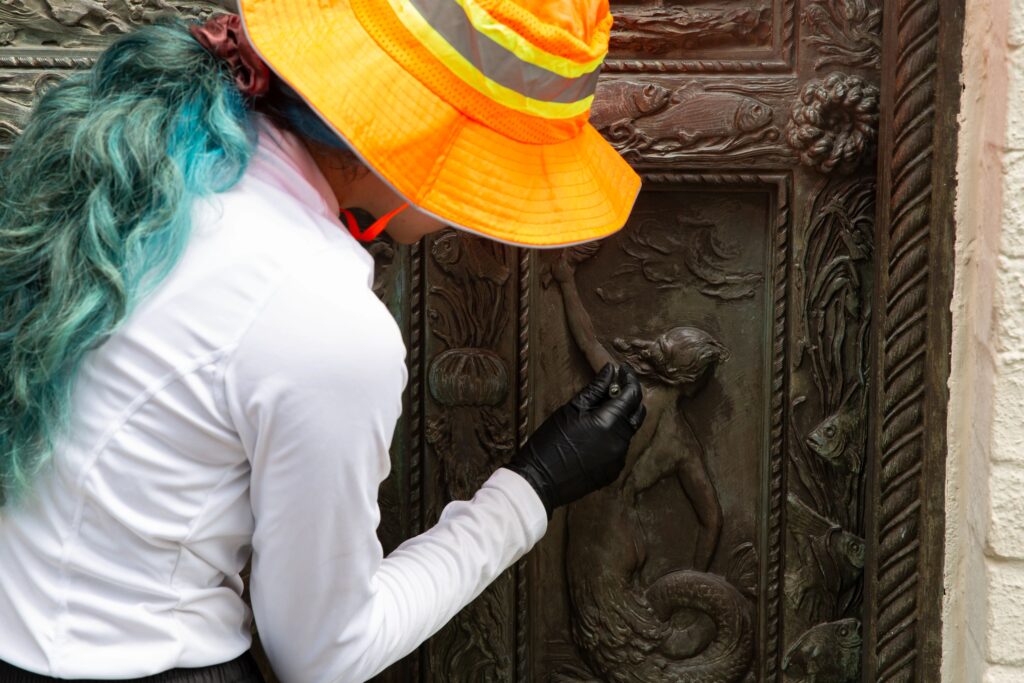
Changing the Strategy
Like I said before, the plan is very important, and this time wasn’t the exception. Although we used basically the same treatment, there was one main reason to have a different strategy: the location. The “flow of people ” near and through the Doors is greater than the area around the statue of Leifr Eiriksson. This meant that there were additional restrictions limiting how and when we could work on them.
The Bronze Doors are composed of five panels: one horizontal panel at the top, two panels to the left and right, and two covered panels behind the visible left and right panels. To be able to work on them, we needed to work in intervals where they were partially open and completely closed to try and not block the entrance for too long. Another aspect at this point was the weather. During our time working on them, the temperature turned even higher in the afternoons so the last few days we only worked during the morning because the wax would not harden when we tried to apply it. Because of this and the fine details in each one of them, each part of the process was a long one. Plus, let’s mention all the little spider and insect “friends” hiding and coming back after we finish a part of the process!
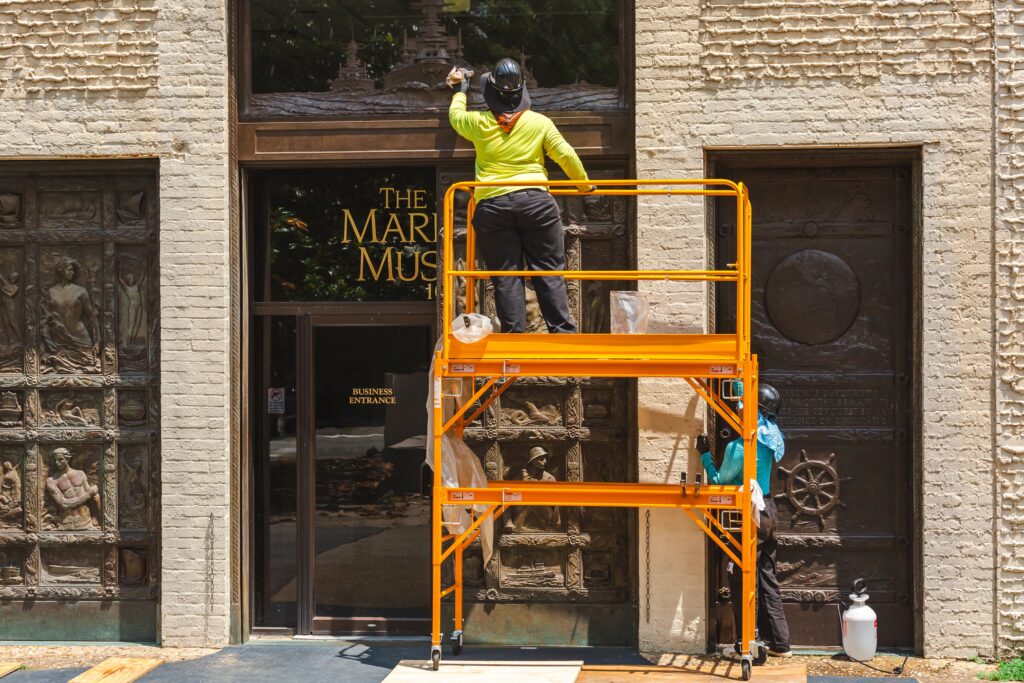
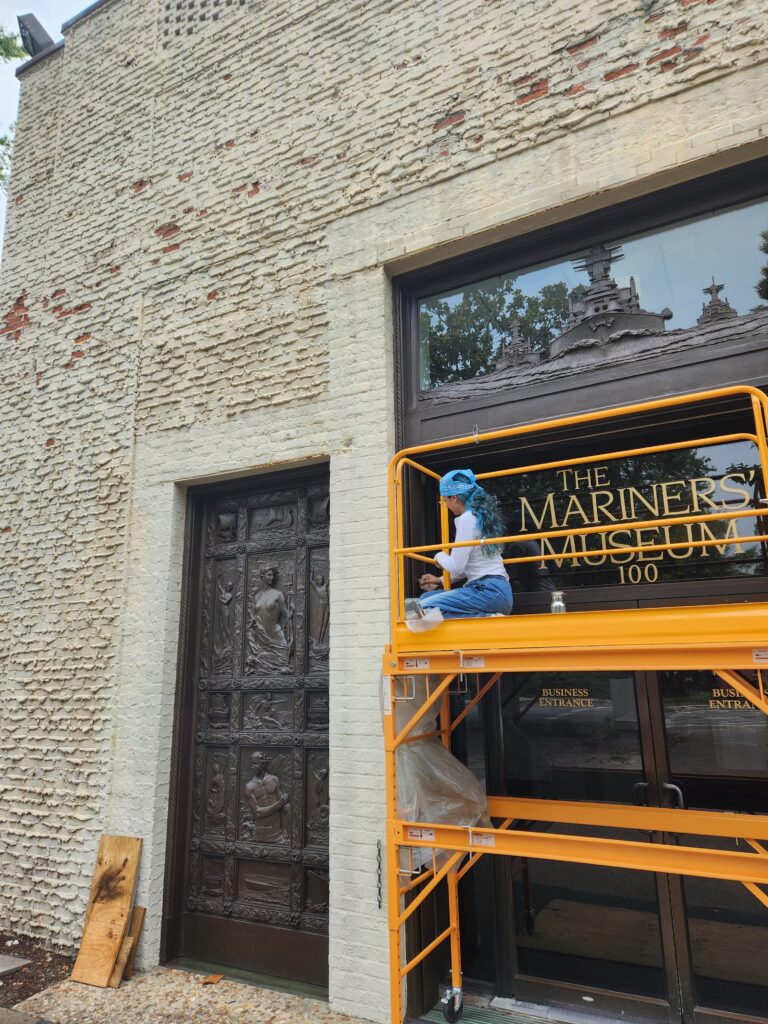
Metal and Patina Workshop with Andrew Baxter
In between working on Leifr and the Bronze Doors, we attended a workshop on making, conserving, and maintaining outdoor bronze sculptures. The workshop lasted two days and we were able to learn about patinas and how to treat bronze objects. It isn’t every day you have the opportunity to learn from an experienced person in an area and, even better, to do so when you are working in that same material at the moment. Andrew Baxter has more than 20 years of experience working with metal, especially bronze. Saying this, you can imagine that the workshop was full of knowledge and experience.
The first day was more like a lecture; Mr. Baxter did demonstrations of patinas with some of the formulas, and he gave us a list while he was explaining the best ways to apply them and how the different chemicals react. The second day was a little different. During the morning we visited a local sculpture garden where he showed us his techniques to apply coatings on outdoor sculptures.
In the afternoon, each of us was able to apply a patina or two on some bronze test coupons. Some went more experimental and others tried to follow the formulas. It was a great experience; I am happy that I was able to be part of it.


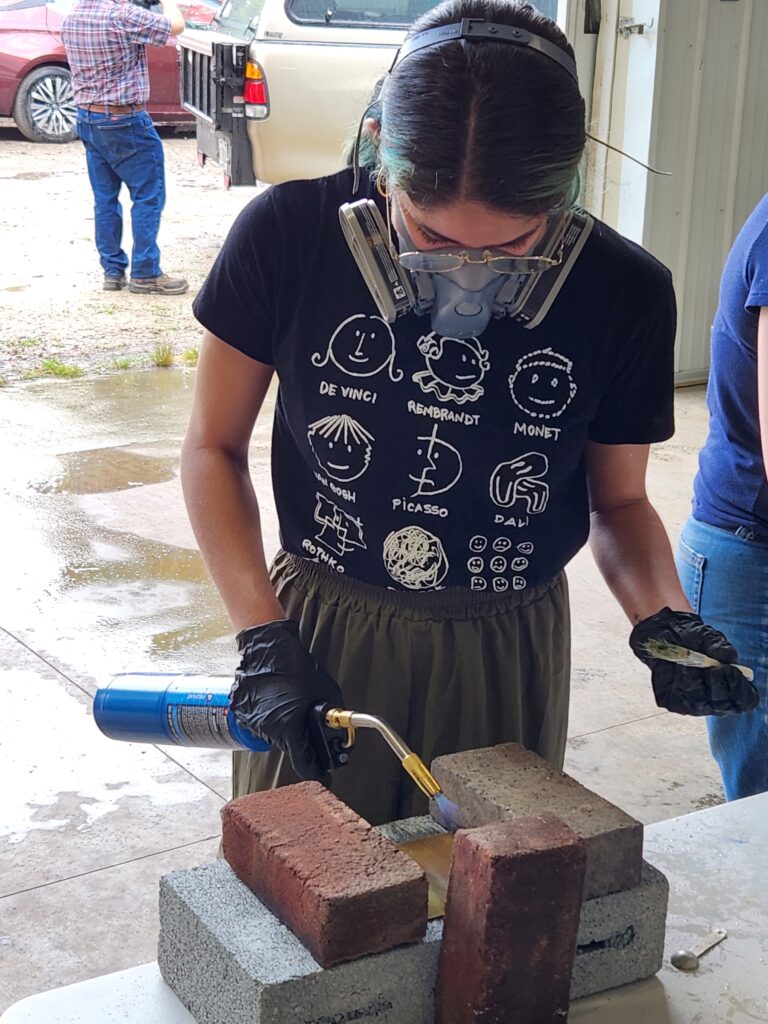
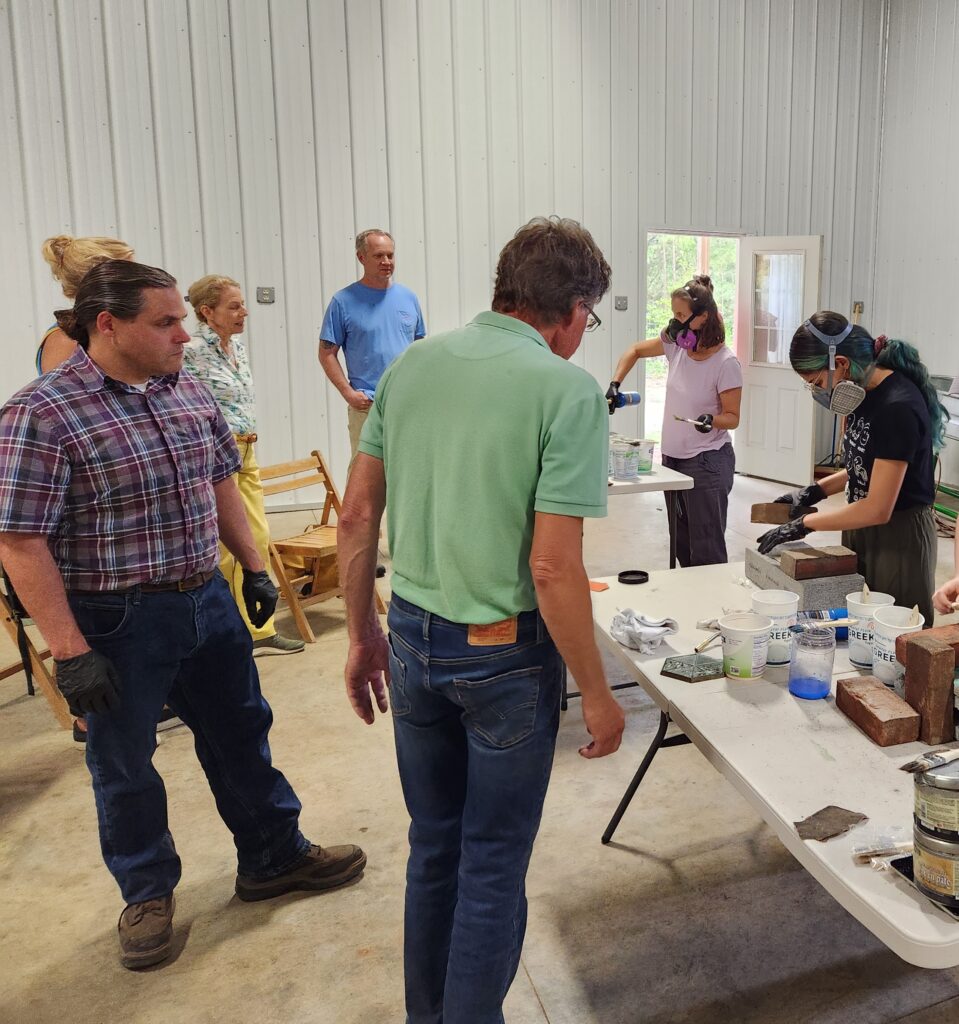
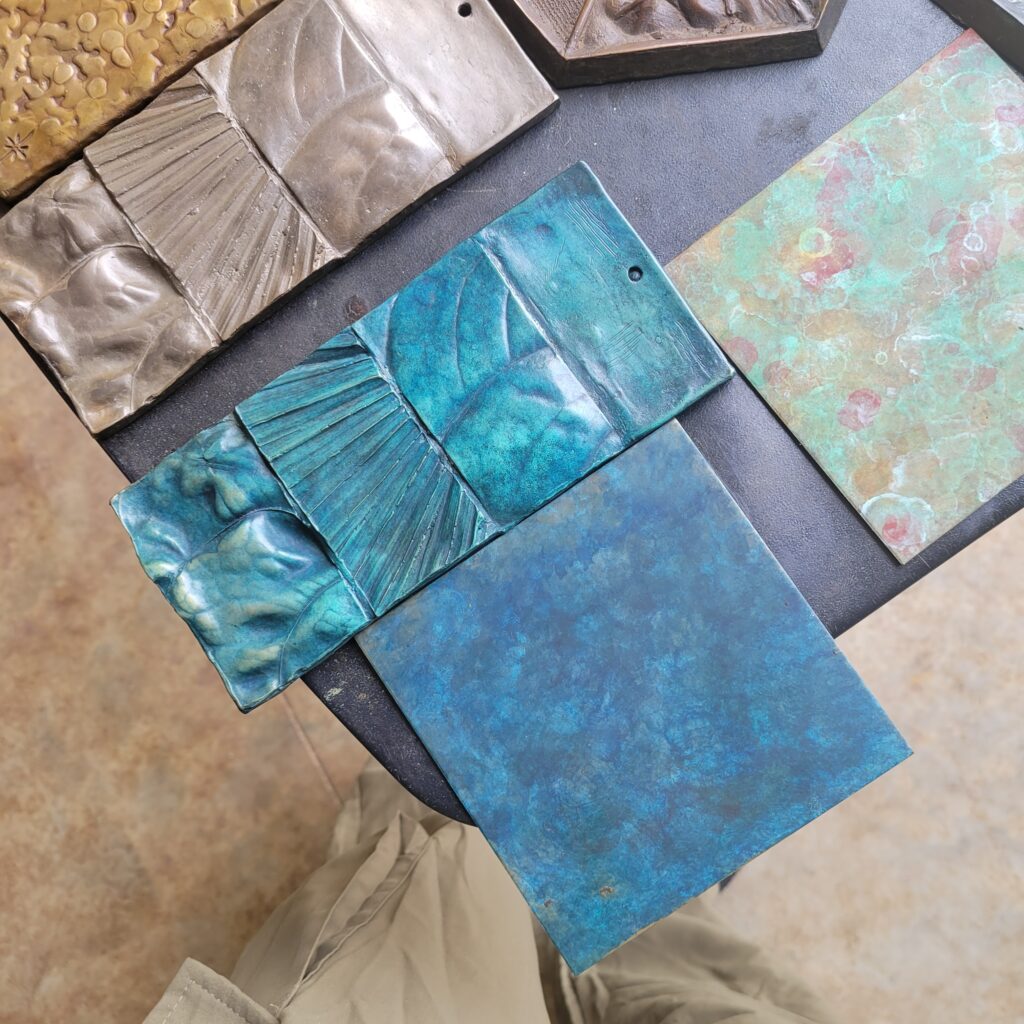
Applying what we learned
After attending the workshop, we made some small changes to apply things that we learned to the Bronze Doors’ treatment. Instead of mixing a predetermined amount of pigment with wax and solvents like previous treatments, we used Mr. Baxter’s technique. To do this, we added pigments directly to the wax to match the Doors’ color, and applied thin layers to the Doors, buffing after a couple of minutes. Indeed, it was much easier to do it this way. We were able to “play” with the color, just like Mr Baxter showed us, to match the tones on the Doors. We needed more pigment to work this way, but the results were worth it.
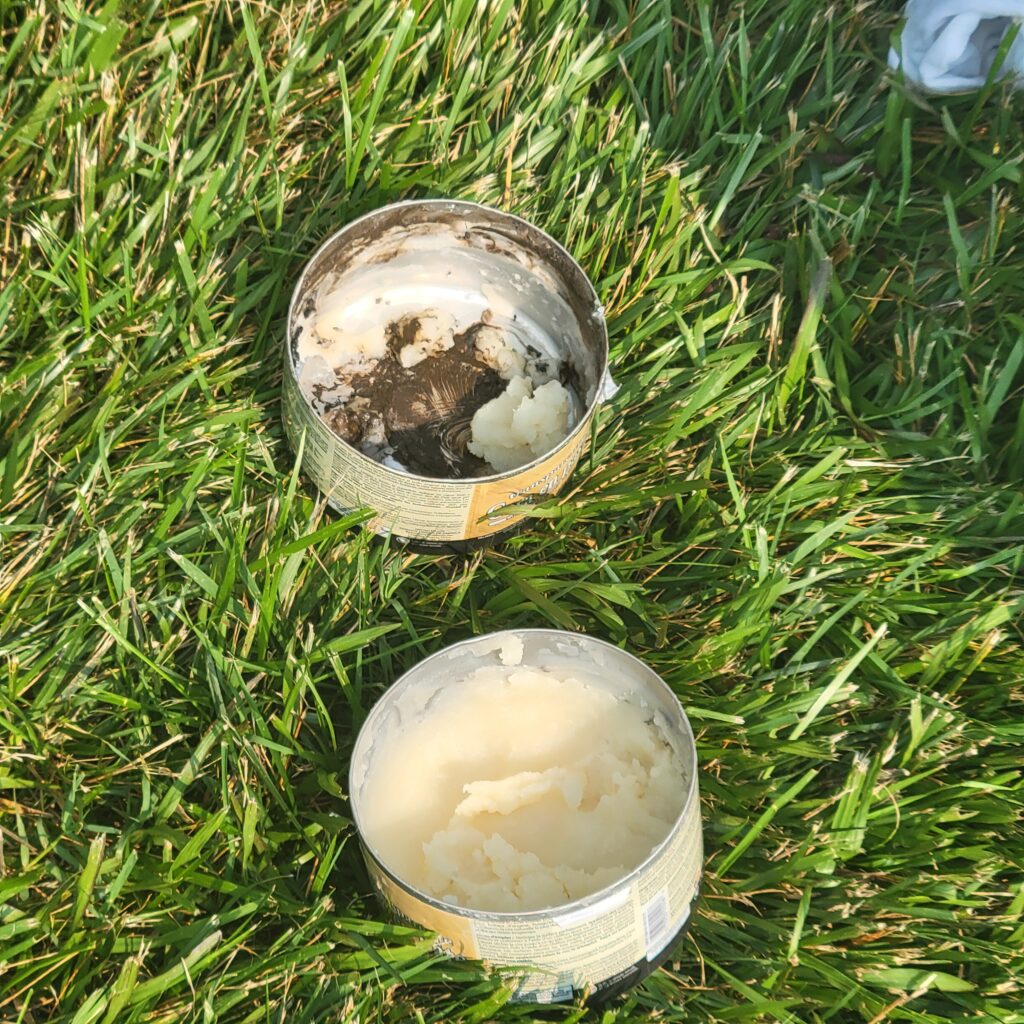
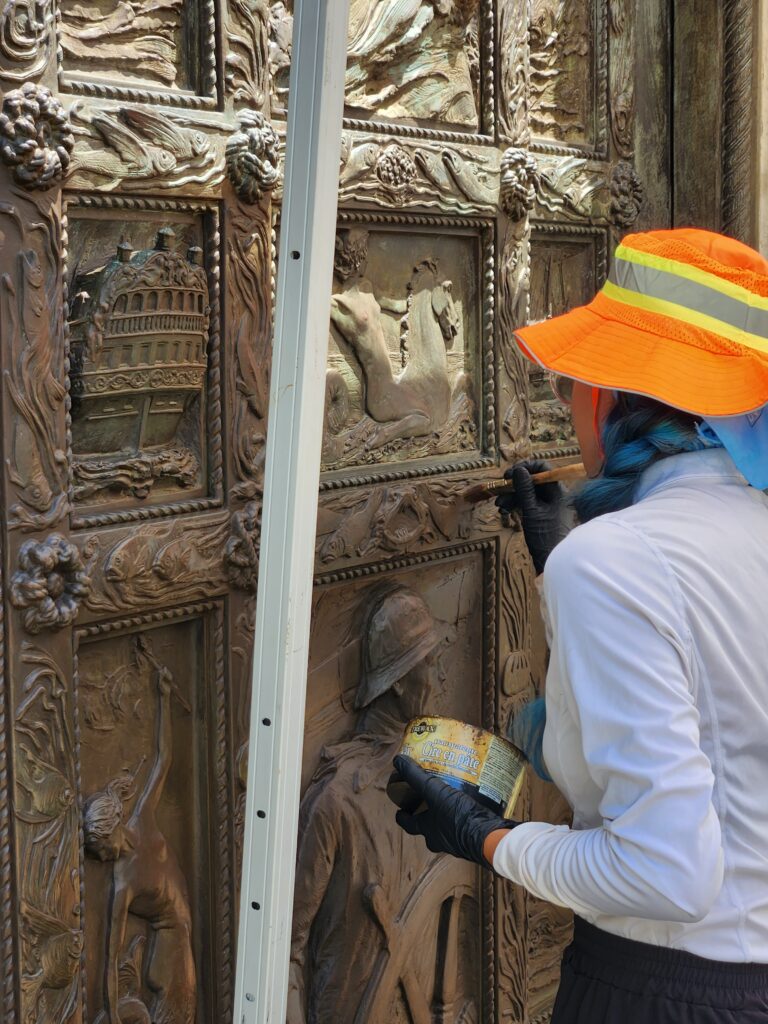
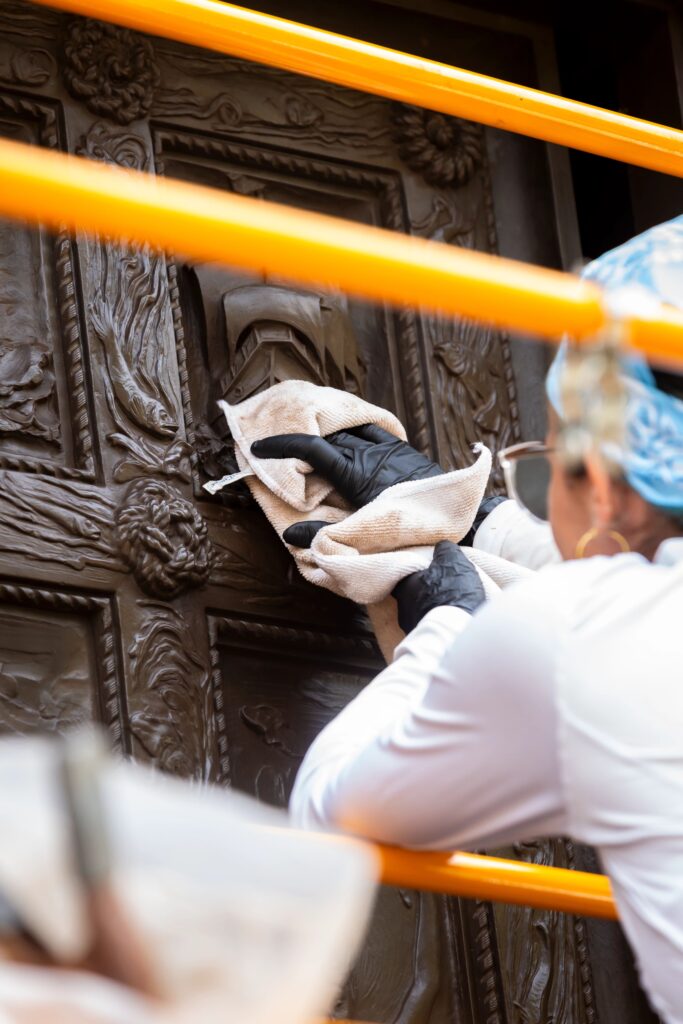

At this point maybe you are thinking, is this the end of the project? Sadly it is. Because we have run out of time, we can’t start treating other objects. However, I am happy that we were able to treat two big outdoor objects and be able to see the before and after; it’s something that you can’t simply explain with words. It was a pleasure to me to be part of this amazing project, and team, even if it was for a short time. I invite you to visit and look for these outside objects to see the final results, because even the photos don’t do them justice!

Bibliography:
- “Twenty-Five Years of Caring for Great Art” Bronze Et Al, LTD. Conservation & Restoration. Accessed July 7 2023 https://www.bronzeetal.com/index.php